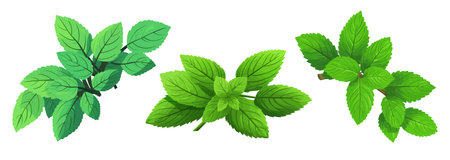Introduction to Urban Foraging in the UK
Urban foraging is making a strong comeback across British cities, blending age-old survival instincts with modern curiosity. This practice involves searching for edible greens and wild weeds right in the heart of bustling towns, public parks, and along canal paths—proving that nature’s larder can thrive amidst concrete and tarmac. In today’s UK, urban foraging isn’t just about free food; it’s a mindful return to our roots, connecting city dwellers with their surroundings and promoting sustainable living. However, there are key principles every urban forager should grasp before setting out. Respect for local environments and laws is paramount; always forage responsibly by taking only what you need and leaving plenty behind for wildlife and fellow foragers. Safety is another cornerstone—never consume anything unless you’re absolutely certain of its identity, as misidentification can be hazardous. With proper knowledge and a sharp eye, urban foraging offers not just nourishment but an education in resilience, resourcefulness, and the hidden abundance thriving all around us in Britain’s urban spaces.
Legalities and Ethical Foraging
Before you set out with your basket and gloves, it’s crucial to get your head around the legal framework governing urban foraging in the UK. The act of picking wild plants isn’t as simple as plucking what you fancy—there are laws in place to ensure both public safety and environmental preservation. Chief among these is the Wildlife and Countryside Act 1981, which makes it illegal to uproot any wild plant without the landowner’s permission, and outright bans the picking or destruction of certain protected species. As an urban forager, knowing where you stand legally can keep your hobby both safe and sustainable.
Key Legal Considerations
| Aspect | Details |
|---|---|
| Picking (Leaves, Flowers, Fruit) | Generally allowed for personal use on public land unless explicitly prohibited by signage or bylaws. |
| Uprooting (Roots, Whole Plants) | Illegal without explicit permission from the landowner under Section 13 of the Wildlife and Countryside Act 1981. |
| Protected Species | Certain rare plants are protected—never pick or disturb these. Consult Natural England’s list before foraging. |
| Private Land | Always seek permission from the landowner before foraging. |
| Parks & Commons | Council bylaws may restrict foraging; check local regulations before you start collecting. |
Ethical Foraging Practices
Beyond legality, ethical foraging is about respect—for nature, for fellow city dwellers, and for future generations of foragers. The golden rule is to take only what you need and leave enough behind for wildlife and regeneration. Avoid stripping entire patches bare; instead, harvest lightly across wider areas. Don’t forage near busy roads or polluted sites where plants may absorb heavy metals or toxins. And always positively identify every plant before consuming—mistakes can be fatal.
Responsible Foraging Checklist
- Know your plants: If in doubt, leave it out.
- Harvest selectively: Never take more than a third from any patch.
- Avoid rare or protected species entirely.
- Respect private property and local regulations.
- Leave no trace: Don’t damage habitats or leave litter behind.
A Final Word on Urban Etiquette
If challenged by council workers or members of the public while foraging, be polite and explain your activity. Share knowledge rather than secrets—building goodwill helps keep urban foraging a thriving tradition rather than a clandestine pursuit. By understanding the law and following sound ethics, you’ll ensure that Britain’s cities remain rich with edible greens for generations to come.

3. Identifying Common Edible Greens and Weeds
Urban foraging in the UK is all about knowing your greens from your nasties. The good news is that many edible plants are both abundant and easily recognisable, even in the heart of Britain’s cities. Here’s a field guide to some of the most common finds.
Wild Garlic (Allium ursinum)
Often carpeting shady woodlands and park edges with its lush green leaves, wild garlic is unmistakable once you catch its pungent aroma. The long, pointed leaves appear in early spring and are followed by star-shaped white flowers. Both leaves and flowers are edible, ideal for pesto or adding punch to salads. Always avoid confusing it with lily of the valley, which is toxic – if it doesn’t smell like garlic, leave it be.
Nettles (Urtica dioica)
Stinging nettles are a classic British weed and an excellent wild food source if handled with care. Look for serrated, heart-shaped leaves on upright stems – gloves are essential unless you fancy a tingle. Young tops are best for eating; boil or steam to neutralise the sting before using them in soups or teas, packed with iron and vitamins.
Dandelion (Taraxacum officinale)
The humble dandelion pops up in lawns, pavements, and parks across the UK. Every part is edible: bitter young leaves go well in salads, bright yellow flowers can be brewed into tea or wine, and roots roasted for a caffeine-free coffee substitute. Make sure to pick from clean areas away from dog-walkers and roadways.
Chickweed (Stellaria media)
This delicate green thrives in cracks, garden beds, and shaded city corners. It has small star-like white flowers and soft oval leaves growing opposite each other along weak stems. Chickweed tastes mild and is perfect raw in sandwiches or salads. It’s a good source of vitamin C but avoid gathering where herbicides may have been sprayed.
Key Foraging Tips
- Always positively identify plants before eating – when in doubt, leave it out.
- Avoid picking from polluted sites or where chemicals may have been used.
- Harvest sustainably; only take what you need and leave enough for wildlife and regrowth.
Your Next Urban Adventure
The British urban landscape is richer than you might think. With a sharp eye and a bit of knowledge, city dwellers can supplement their larder while reconnecting with nature – no countryside ramble required.
4. Foraging Locations: Parks, Verges, and Hidden City Niches
Urban foraging in the UK isn’t just about knowing your wild garlic from your nettles—it’s about picking the right spots to harvest safely and sustainably. The concrete jungle hides a surprising bounty of edible greens, but every location comes with its own set of considerations: pollution, legality, and respect for the ecosystem. Here’s how to navigate urban landscapes like a true survivor, ensuring both your safety and a healthy haul.
Top Urban Foraging Spots in the UK
| Location Type | Pros | Cons | Typical Finds |
|---|---|---|---|
| Parks & Public Gardens | Abundant plant variety; generally well-maintained; less vehicle pollution if away from roads | Some areas strictly off-limits (protected beds/lawns); heavy footfall can mean overharvesting | Nettles, dandelion, wild garlic, sorrel |
| Roadside Verges & Cycle Paths | Unexpected diversity; often neglected by others | Risk of pollutants from traffic; check local council regulations before picking | Mallow, chickweed, fat hen |
| Canal Towpaths & Riverside Walks | Moisture-loving edibles thrive here; quieter than parks | Beware of contaminated water; slippery banks; occasional littering | Watercress (in cleaner waters), willowherb, comfrey (roots with caution) |
| Community Gardens & Allotments (with permission) | Cultivated wild patches; knowledgeable locals; safer environment | Requires explicit consent from plot holders or organisers | Lambs lettuce, purslane, nasturtiums |
| Hidden City Spaces (e.g., old churchyards, disused lots) | Untapped potential; less competition from other foragers | Possible contamination; unknown history—avoid industrial/chemical sites entirely | Cow parsley (check identification!), mugwort, cleavers |
Safety First: Pollution and Legal Guidelines
Pollution: Always forage at least 10 metres away from busy roads or industrial zones to avoid contaminants like lead and hydrocarbons. Opt for green corridors running through residential areas or protected parkland when possible.
Regulations: Most councils allow “reasonable personal use” foraging on public land (like picking a handful of greens), but commercial harvesting is strictly prohibited. Never uproot plants without landowner permission—this is illegal under the Wildlife and Countryside Act 1981. In London, some boroughs (such as Hampstead Heath) have outright bans on foraging to protect fragile habitats.
Essential Urban Forager’s Checklist:
- Avoid dog-walking hotspots and pesticide-sprayed lawns.
- Use gloves and wash all finds thoroughly.
- Respect private property and never trespass.
- If in doubt about plant ID or legality, leave it be.
- Take only what you’ll use—leave enough for wildlife and fellow foragers.
The Bottom Line:
Cities across the UK offer a wealth of edible greens if you know where—and how—to look. Whether you’re scanning the edges of a Manchester park or exploring a hidden Bristol riverside path, urban foraging rewards those who combine bushcraft vigilance with respect for the rules. Stay sharp, stay legal, and savour the taste of wild Britain right on your doorstep.
5. Tools, Safety, and Seasonal Tips
Essential Kit for City Foragers
If you’re venturing into the urban wilds of Britain, don’t leave home without your essential foraging kit. At minimum, carry a sturdy reusable bag or a traditional basket—plastic carrier bags are best avoided as they can bruise delicate greens. A good pair of gardening gloves will protect your hands from nettles, brambles, and broken glass. A sharp pocketknife or folding foraging knife is invaluable for cleanly harvesting leaves and stems without damaging the plant or its surroundings. Many experienced foragers also swear by a compact field guide tailored to UK flora; if in doubt, consult it before picking anything unfamiliar. Lastly, a small notebook is handy for jotting down locations and seasonal observations—a true urban forager’s treasure map.
Quick Safety Checklist
Urban foraging is rewarding but requires vigilance. Never pick plants from areas exposed to heavy traffic fumes, dog-walking hotspots, or where pesticides may have been sprayed. Always positively identify any plant before consuming it—mistakes can be costly. If you’re unsure, leave it. Wash all finds thoroughly at home, using cold running water to remove grit and pollution residues. Stick to familiar species like dandelion, wild garlic, and chickweed until your knowledge grows. And remember: forage responsibly—never strip an area bare; take only what you need and always leave enough for regrowth and wildlife.
Making the Most of Each Season’s Bounty
Spring
This is prime time for tender young shoots—look out for nettles (with gloves on), wild garlic in shaded woodlands, and vibrant dandelion leaves in city parks.
Summer
As the weather warms up, edible flowers like elderflower burst onto the scene along canal paths and railway embankments. Purslane and fat hen thrive in disturbed soils near building sites.
Autumn
Late summer into autumn brings a glut of berries and nuts—think blackberries brambling over fences, hawthorn berries lining hedgerows, and sweet chestnuts underfoot in urban commons.
Winter
The lean season offers hardy greens such as hairy bittercress hiding between paving slabs and chickweed flourishing in sheltered spots. Keep your eyes peeled—even in the cold months there’s something to be found if you know where to look.
6. Sustainable Harvest and Cooking Inspiration
Responsible urban foraging is about more than just spotting a patch of nettles or wild garlic—its about ensuring these greens are there for the next wanderer, too. Always take only what you need, leaving plenty behind to allow plants to regrow and provide food for wildlife. Use a sharp knife or scissors for clean cuts, avoid uprooting entire plants, and never harvest from protected sites or areas that may have been sprayed with chemicals. Stick to common species like dandelion, chickweed, and sorrel, which thrive in abundance across British parks and roadside verges.
Gathering Without Guilt
Adopt the one-in-ten rule: if you see ten healthy plants of one type, only take from one. For leafy greens, snip off young leaves rather than older ones, encouraging fresh growth. Leave roots intact unless targeting invasive species (like Japanese knotweed), and always respect local by-laws—some councils restrict picking in certain green spaces.
Classic British Recipes for Wild Greens
Once home, transform your finds into time-honoured British dishes. Toss young nettle tops into a robust nettle soup with potatoes and leeks—a wartime staple still beloved today. Add chickweed and sorrel to a wild salad alongside garden cress and radishes for peppery bite and tang. You can also blend wild garlic leaves into a punchy pesto to stir through pasta or spread on toast. For a traditional twist, try wilted dandelion greens sautéed with butter as a side for Sunday roast, or bake them into hearty pies with potato and cheese.
Preserving Your Bounty
If youve gathered more than you can eat fresh, blanch leafy greens and freeze them for later use. Drying herbs like yarrow or mugwort allows you to enjoy their flavours in teas or stews throughout the year.
Respect the Land – Reap the Rewards
Urban foraging in Britain isn’t just about filling your basket; it’s about forging a connection with your local landscape and its hidden larder. By harvesting mindfully and cooking creatively, you’ll not only savour unique flavours but also play your part in preserving urban biodiversity for generations to come.


